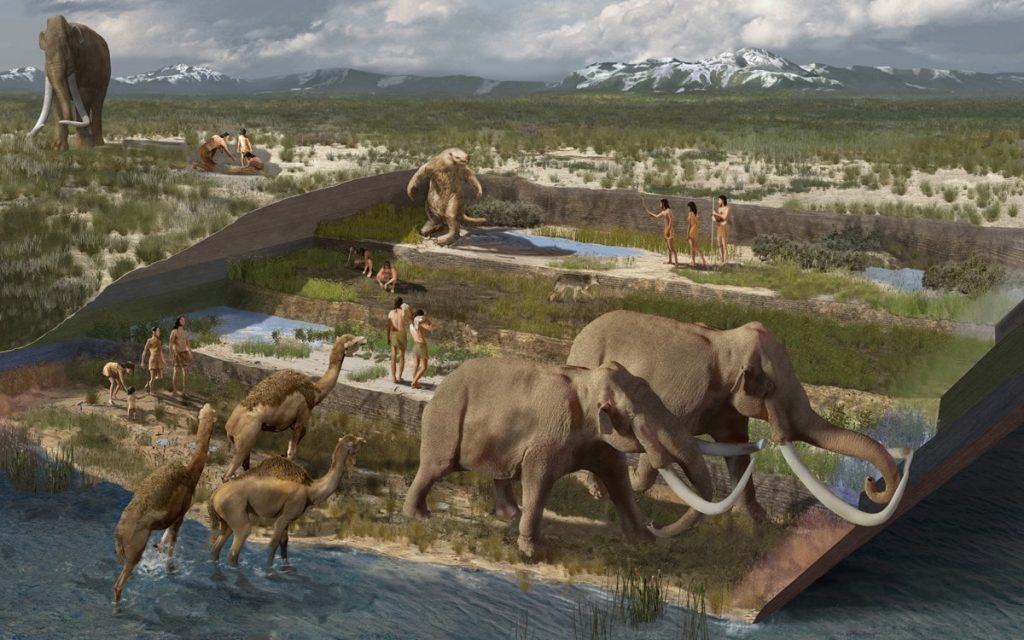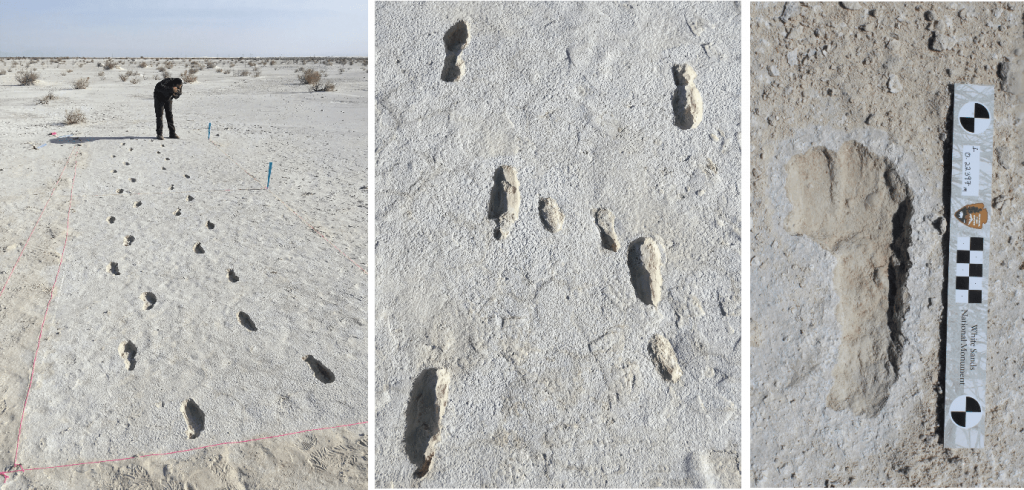A recent fossil footprint found in New Mexico, the United States, indicates that humans existed in North America about 23,000 years ago.
The footprints have been found in the soil in New Mexico’s White Sands National Park. The US Geological Survey experts have examined the top and bottom layers of the track with the help of radiocarbon dating and found that footprints were formed here during about two thousand years.

Bournemouth University has shared information on the astounding finding of human existence. Until recently, it was thought that humans first appeared on the American continent between 13 and 16 thousand years ago, but new discovery reveals that Homo sapiens arrived considerably earlier, around 23 thousand years ago. This latest discovery is being considered a major archaeological success in the United States.
Dating was done by Drs Jeff Pigati and Kathleen Springer of the US Geological Survey. Kathleen Springer on the subject, “Our dates on the seeds are tightly clustered and maintain stratigraphic order above and below multiple footprint horizons – this was a remarkable outcome.” This corresponds to the height of the last glacial cycle, during something known as the Last Glacial Maximum, and makes them the oldest known human footprints in the Americas,” she said.

Showing the different “time periods” of the last ice age, and before the sand dunes formed, White Sands would have looked like a mix of grasslands and wetlands surrounding the great ancient Lake Otero. Karen Carr
The footprints tell a fascinating story about life at the period, with the tracks mostly made by teens and younger children, with the rare adult judged by their size. There are also mammoth, gigantic ground sloth, dire wolves, and bird tracks at the site.
The tracks at White Sands were first discovered by David Bustos Resources Manager at the National Park. The team also pioneered non-invasive geophysical techniques to help locate the site.
Tommy Urban, from Cornell University, said, “Detection and imaging with non-destructive technology have greatly expanded our capacity to study these remarkable footprints in their broader context”.

Human Footprints. NPS Photo
Previously, it was assumed that people arrived in America considerably later, following the melting of the North American ice sheets, which opened up migration routes. However, the imprints now suggest that people arrived in the Americas far earlier.
Professor Vance Holliday of the University of Arizona said, “There has been a lot of debate over many years about the first peopling of the Americas with several early sites identified. Few archaeologists see reliable evidence for sites older than about 16,000 years. The White Sands tracks provide a much earlier date.”
The research is published in Science.
The research was undertaken by researchers from Bournemouth University, the National Park Service, the U.S. Geological Survey, Cornell University, and the University of Arizona.
Bournemouth University